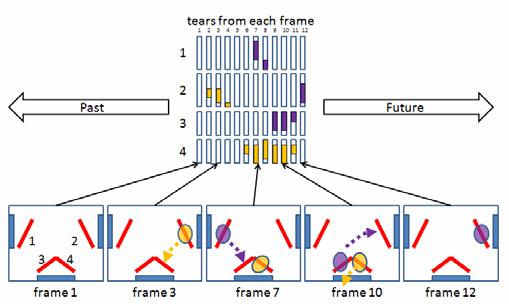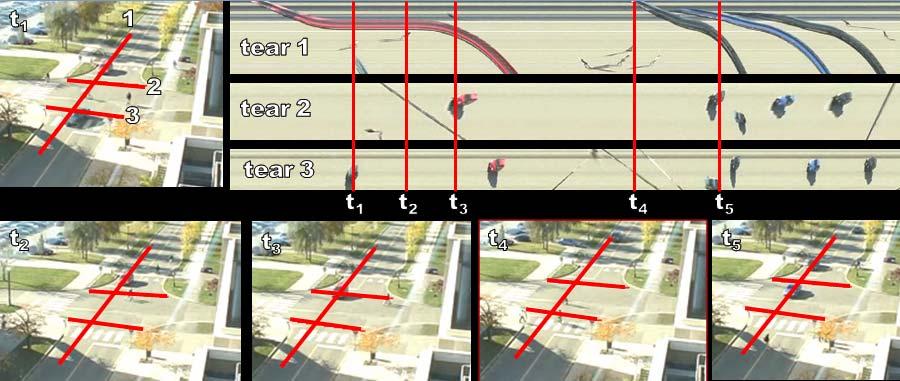Exploring Video Streams using Slit-Tear Visualizations
Authors
Short description
Suitable Datatypes
This method can be applied to live video as well as captured AVI files where each frame is either computed seperately or completely in advance, together with its successors. The latter is only relevant to non-live video.
Figures
Composition of a slit-tear visualization
For each video frame, the pictures under each slit are captured and aligned into a vertical column which is appended to the right side of the visualization. The bottom of the image represents a number of video frames that capture a top-down view of a room with three blue doorways. Herein, four slits have been manually defined. The actual slit-tear visualization above shows the occurence of events. In frame two, a person walks towards to the bottom door, crossing slit number 2. This intrusion is captured and can be seen as yellow trace in successive frames for the corresponding slit.

Pattern-level analysis
This image shows how events can be visualized spatially which allows for a discovery of patterns and for an effective correlation of events. Frames t1 to t5 capture a traffic intersection at particular moments in time according to the three slits, drawn by the observer. The interaction of cars and pedestrians is visualized by setting up a timeline for each pre-defined slit where the movement of the objects is depicted by strokes of different length, based on their orientation to each slit.

Important citations
Evaluation
As per May 2009, there are no evaluations of slit-tear visualizations. Hence, an evaluation of the effectiveness of this tool for novice users in realistic tasks is planned for the near future.
References
[Tang et al., 2008] Anthony Tang, Saul Greenberg and Sidney Fels, 2008. Exploring Video Streams using Slit-Tear Visualizations. In Proceedings of the working conference on Advanced Visual Interfaces (AVI 2008). (May 28-30, Napoli, Italy). ACM Press. pp: 191-198.